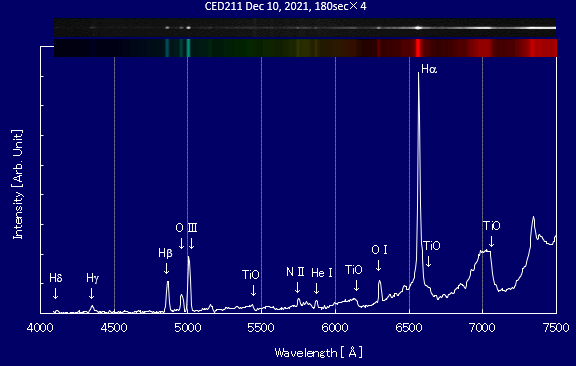

| Date & Time: | Dec 10 2021, from 19:00 to 19:09 JST(+0900) |
| Composed 4 shots with 3 minutes exposed | |
| Optical: | Meade 25cm(10") Schmidt Cassegrain (f=2500mm, F10.0) |
| with SBIG DSS7 Spectrometer | |
| Auto-guided with Meade LX200 Equatorial & Lacerta M-GEN | |
| Cooled CCD Camera: | SBIG ST-402ME (Temp.: -25°C) |
| Location: | Ooizumi, Hokuto city, Yamanashi pref. |
| Close the window | Copyright(c) 2021 by Naoyuki Kurita, All rights reserved. |